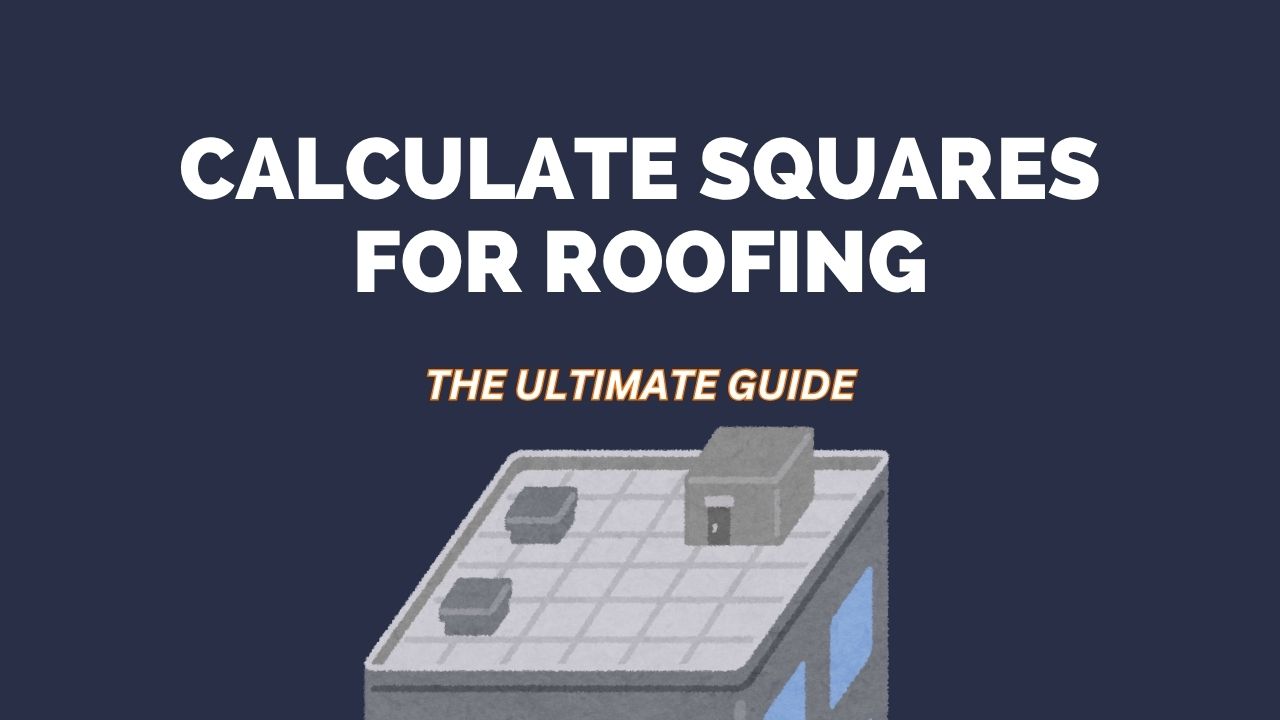How to Calculate Squares for Roofing?


When estimating a new roof or planning repairs, one of the most important steps is knowing how many squares your roof has. Roofers use the term “square” as a standard measurement to make estimating materials — like shingles or underlayment — much easier.
In this guide, we’ll explain what a roofing square is, how to calculate it, how to factor in roof pitch, and how to include waste for a complete and accurate roofing estimate.
What Is a Roofing Square?
A roofing square is a unit of measurement used in the roofing industry.
1 roofing square = 100 square feet of roof area.
So, if your roof covers 2,000 square feet, that’s equal to 20 squares.
This makes it easier to order shingles since roofing materials (especially asphalt shingles) are usually sold by the square.
Step 1: Measure Your Roof Area
Start by finding the total square footage of your roof.
If your roof is a simple rectangle:
For example, if your roof measures 40 ft long and 30 ft wide:
Result: The roof area is 1,200 sq. ft.
Step 2: Convert Square Footage to Roofing Squares
Now convert the total area into roofing squares by dividing by 100:
Example:
Result: Your roof is 12 squares.
Step 3: Adjust for Roof Pitch (Slope)
If your roof is sloped (which most are), the surface area is larger than the ground footprint. To find the true area, you’ll need to use a slope multiplier.
Here’s a quick slope multiplier chart:
| Roof Pitch | Slope Multiplier |
|---|---|
| 4/12 | 1.054 |
| 6/12 | 1.118 |
| 8/12 | 1.202 |
| 10/12 | 1.305 |
Example:
If your home’s ground area is 1,500 sq. ft. and the roof pitch is 6/12, then:
Now, convert this to squares:
Result: You’ll need about 17 squares of roofing material.
Step 4: Include Waste Factor
Roofing materials are rarely installed without some waste. Cuts, overlaps, and fitting around ridges and edges all require extra shingles.
Most roofers recommend adding 10–15% for waste.
Example:
Result: You should order about 19 squares of shingles.
Quick Reference Chart
| Roof Area (sq. ft.) | Roofing Squares | +10% Waste |
|---|---|---|
| 1,000 | 10 | 11 |
| 1,500 | 15 | 16.5 |
| 2,000 | 20 | 22 |
| 2,500 | 25 | 27.5 |
| 3,000 | 30 | 33 |
Pro Tip from a Roofing Expert
Always round up your final number. Ordering a little extra ensures you have enough material for ridge caps, starter strips, and repairs. Returning a few leftover bundles is much easier than running short mid-project!
Final Thoughts
Knowing how to calculate squares for roofing helps you estimate materials accurately and budget more effectively.
To recap:
- Measure your roof area.
- Adjust for slope if needed.
- Divide by 100 to get squares.
- Add 10–15% for waste.
Whether you’re DIY-ing a small project or working with a professional roofer, understanding this calculation will save you time, money, and stress.